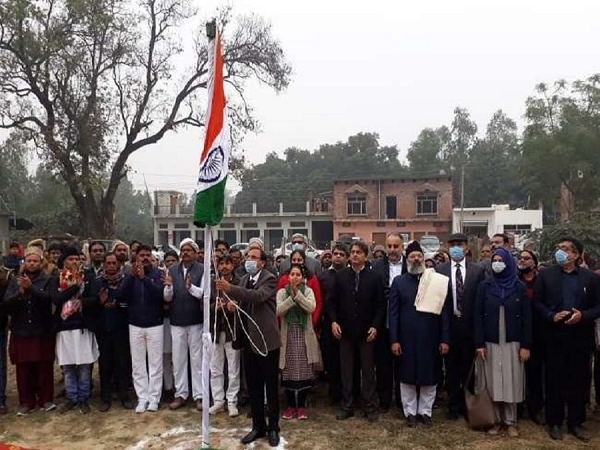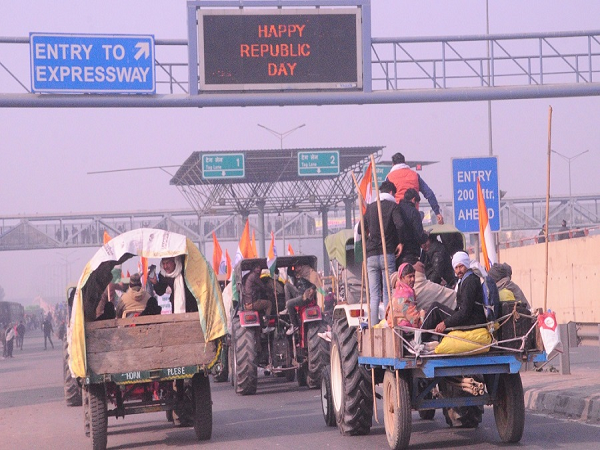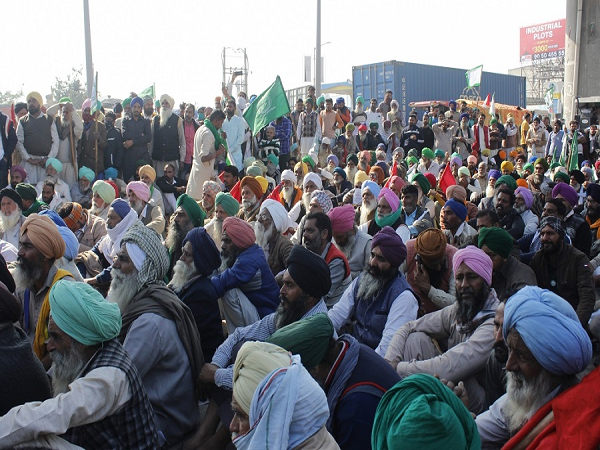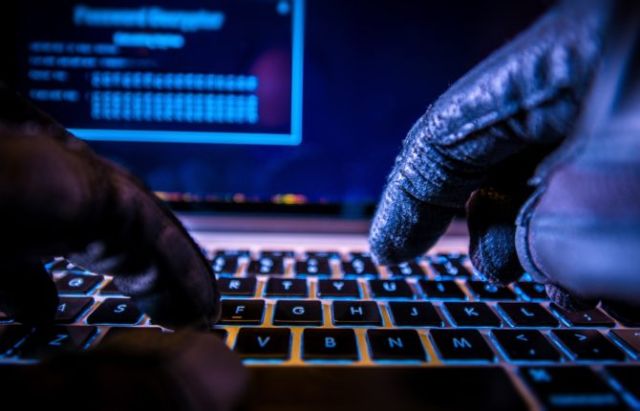
by admin | May 25, 2021 | News

During his meeting with Prime Minister Modi on Sunday, Bukhari also presented a memorandum highlighting the pressing demands of the people of Jammu and Kashmir.
JAMMU — In a meeting with Prime Minister Narendra Modi, Apni Party president Altaf Bukhari reiterated the demand for the restoration of statehood of Jammu & Kashmir, the party said in a statement on Monday.
The statement said that the during the meeting on Sunday, Bukhari also presented a memorandum highlighting the pressing demands of the people of Jammu and Kashmir.
The meeting that lasted almost for an hour was held in a very cordial atmosphere.
Reiterating his demand for the restoration of statehood of J&K, Bukhari urged the Prime Minister not to delay fulfillment of this commitment any further.
Expressing serious concern with regard to the rising unemployment rate in J&K, Apni Party chief urged for formulation of a comprehensive employment package for the youth of J&K who have been yearning for a dignified livelihood.
He emphasized on the need for exploration of viable options including roping in of multinational companies across the country and in the Gulf countries so as to address the unemployment problem of J&K’s qualified and skilled youth.
Bukhari also solicited the intervention of the Prime Minister for restoration of age relaxation for J&K’s UPSC aspirants that was in vogue before January 2020. He said that scrapping the UPSC age relaxation clause to the Domicile of J&K has extremely disappointed the youth of J&K.
Similarly, Bukhari urged the Prime Minister to order lifting of ban on 4G mobile internet services across Jammu and Kashmir. He termed the ban on 4G in J&K unjustifiable and a discrimination with the people especially the student and business community.
Referring to the return of Kashmiri Pandits into the valley, Bukhari pleaded for an honourable return of Pandits and sought their rehabilitation with the majority community in the Valley. He said any ghettoization of this inseparable part of Kashmiri society will not be acceptable to the people.
Bukhari also pressed for the construction of individual and community bunkers for the border residents in J&K so as to prevent the loss of life and damages to the properties recurring due to cross LoC skirmishes.

by admin | May 25, 2021 | News

A mosque measuring 15,000 square feet will be built in the Dhannipur village. It will be of the same size as that of the Babri mosque.
AYODHYA — The process for starting the construction of a mosque in the Dhannipur village in Ayodhya began on Tuesday.
The members of the Indo-Islamic Cultural Foundation (IICF) that will oversee the mosque construction, unfurled the national flag on the occasion of Republic Day on Tuesday morning and this was followed by plantation of tree saplings by the chief trustee and the member trustees of the IICF.
As envisaged in the project, a green area, which will have plants from all over the world — from the Amazon rainforest to areas in Australia that report bushfires — and from all different geographical regions of India will be developed to create awareness on the imminent threat posed by climate change.
Zufar Faruqi, chairman of IICF, planted a tamarind sapling and he was joined by other members and local villagers.
The soil from the designated plot was taken out for testing before the actual construction begins.
The first pictures of the project had been released on December 19 last year by the IICF.
Following the release, secretary and spokesperson of the trust Athar Hussain had confirmed that the Dhannipur Mosque project includes a hospital, a museum, a library, a community kitchen, the Indo-Islamic Research Centre, a publication house and a mosque.
A mosque measuring 15,000 square feet will be built in the Dhannipur village. It will be of the same size as that of the Babri mosque. The shape of the mosque may be completely different from that of other mosques.
Although the blueprint suggests a circular mosque with a unique minaret over it, project architect S.M. Akhtar hinted that it may be square-shaped like the Kaaba Sharif in Mecca, Saudi Arabia.
The five-acre plot had been given to the Sunni Waqf Board in lieu of the land on which the Babri mosque stood, prior to the demolition. This was as per the verdict of the Supreme Court in November 2019.

by admin | May 25, 2021 | News

The police resorted to tear gas shell firing and mild lathi-charge to contain the tractor rally
NEW DELHI — Chaos and ruckus was reported from various parts of the border areas of Delhi on Tuesday as the protesting farmers entered the national capital allegedly defying the agreement of the scheduled time of tractor rally and creating multiple fronts at Karnal Bypass, Mukarba Chowk, Transport Nagar, Akshardham, Gazipur and Tikri border.
Thousands of farmers marched into the national capital on foot and riding tractors, even as the paramilitary forces and Delhi Police personnel kept a wary eye on the evolving situation.
The police resorted to tear gas shell firing and mild lathi-charge to contain the tractor rally and the protesters who have allegedly defied the agreement with authorities and police of three states — Delhi, Haryana and Uttar Pradesh. Several policemen and protesters were also injured in the tractor rally that turned violent on Tuesday.
Visuals of men riding horses were seen at the Karnal Bypass as visuals of protesters breaking barricades at Singhu, Gazipur and Mukarba Chowk emanated.
On Sunday, Delhi Police had allowed the tractor rally after the annual Republic Day parade.
Earlier, during the talks with the police, the protesters were told they could not disrupt the celebrations at Rajpath even as the farmers insisted their parade would be “peaceful”.
However, the farmers reportedly broke barricades and started the rally much before the scheduled time.

by admin | May 25, 2021 | News

NEW DELHI — Bracing the lathi-charge of Police personnel and overcoming barricades, more than 20 tractors entered the iconic Red Fort, hours after the farmers’ parade began on the eve of Republic Day on Tuesday.
Protesters were seen shouting slogans at the Red Fort as they drove tractors with national flags, reports NDTV.
Thousands of farmers comprising mostly youths entered the national capital from the Delhi-Uttar Pradesh Ghazipur border on Tuesday after breaking the barricades and clashed with the police near Akshardham intersection of east Delhi as they took out a huge tractor rally against the government’s new agricultural laws.
As soon as the farmers reached ITO intersection and tried to move towards the Red Fort, chaotic scenes were seen as farmers clashed with the police personnel. The police fired tear gas shells on the farmers and also resorted to lathi charge multiple times.
Protesting Farmers were seen standing on the road looking for a cover while policemen on an overbridge firing tear gas shells on them near Akshardham.
The farmers also allegedly damaged several vehicles with their tractors as the clashes with the Police turned violent.
Many of the farmers and the police personnel were left injured in the clashes.
The visuals of the men riding horses were seen at the Karnal Bypass while the protesters were also reported breaking barricades at Singhu and Mukarba Chowk.
Farmers have been camping at the Delhi borders for the last two months now demanding scrapping of the three farm laws, passed in September during the Monsoon Session of Parliament, to liberalise the sector. So far, eleven rounds of talks between farmers and the government failed to break the impasse.
The farmers have turned down the centre’s last offer to put the laws on hold for 18 months while a special committee conducts negotiations. Farmers demand complete roll back of the contentious laws.
The three controversial laws are the Farmers’ Produce Trade and Commerce (Promotion and Facilitation) Act, 2020, the Essential Commodities (Amendment) Act, 2020 and the Farmers (Empowerment and Protection) Agreement on Price Assurance and Farm Services Act, 2020.

by admin | May 25, 2021 | Opinions
 By Farooq Ahmad Bakloo
By Farooq Ahmad Bakloo
The Internet is the blessing that has revolutionized every sphere of human life. This Internet has defined life differently. With the appearance of the Internet, a lot of obstructions were explained, which first seems impracticable. The Internet has begotten the vast and unprecedented doors and opportunities for children and young people to communicate and socialize, share learn access information and express their views on matters that affect their lives and their communities while posing significant dares to their security. Every dimension of life has been developing very swiftly. Among these dimensions, the educational sectors are also evolving by this information and technology.
First, a common student couldn’t listen to the country’s lectures of prestigious institutes as he could not pay a significant amount of fee. However, because of the Internet, the students need a Smartphone and internet connection. The student can access the country’s best instructors and listen to their thought-full lectures with the help of YouTube. Other educational learning applications like Google classroom, Zoom App, Google meet Watsaspp learning groups. Consequently, somehow, the Internet plays a valuable role in rendering equitable education in society compared to traditional schools. If we look at these physical schools, they are designed according to the class of society. For instance, the students who have sound economic status are enrolling their kids in best public school, while as a person who has not much significant income register their kids in Government schools, henceforth the present schooling system are itself impediment in the way of accessing equitable education.
However, one cannot deny that the Internet is the spring of information. Just on one click a lot of information is presented on the desktop or mobile screens. In this information, some info is relevant to the student needs, and some are not, and some information is not reliable.
The thought that survives in society all information on the Internet is genuine has not much weight.
Another facet of the cyber world is very risky and gives food towards illicit ventures. If the student came to the web of this world, his or her life is ravished completely and often these types of persons become the pathogens for a good society. To shield the citizens from this world’s trap, every nation has formulated the guidelines and establishes some institutions to watch these illegal activities. In India, the famous is cyber cells which have given the responsibility to monitor these malicious activities. Therefore, it depends on the society if they use this Internet for the perspective of human development. For this society, the Internet is a benefit, and the community which uses it in the negative context, for them, the Internet is a scourge. A global youth online behaviour survey conducted by Microsoft reported that 53 % of children with 8-7 age groups in India have cyberbullying victims. Most of the cyberbullying incidents arise out of social media, and Facebook encounters comprise 60% of these incidents.
According to the survey, mobile phones and online rooms were second and third, comprising 40% cases (www.child protection india.com).
In the present, the corona virus has impacted the world brutally; the world went to the lockdowns to curb this deadly virus. In this situation, the most affected sector is education as the schools, colleges, universities were temporarily closed. In this way, the conventional classroom was transferred into the virtual classroom. The students were directed to study their classless online, so now they become entirely dependent on the Internet. Hence the parents of the teenage students must watch the activities of students.
Sometimes the students are using the Internet for the study objectives, and abruptly an inappropriate popup is shown in the corner of the screen. If the student is using the Internet for the first time, he or she becomes inquisitive. He or she most probably searches these types of material. Consequently, with passing days, the students are steadily losing reading interest, and the student is visiting these unwanted pages. One more element which is seen in from some years, that is the hatred stuff against some communities posted by some communal minded people. This type of content also designs the student’s neurons if quickly not corrected by the teachers or parents. Hence, it is very urgent for the parents and the teachers to aware the students regarding the poisonous effects of the Internet on the students.
According to the USA department of education, there are seven ways to keep children or students protected online, these are:
Aware the children protect the children’s identity, Protect the Computer, Create strong passwords, Monitor the online activity and Promote an appropriate online environment.
The first task is awareness, so it is imperative to aware the children or students about the cyber world’s adverse repercussions and its implications for their community and society. In this process, the teachers and the parents play a spine role. Those parents who himself are not aware of the black side of cyberspace, here teachers and those who are well aware of the Internet’s ill impact also play a heart role. Therefore it is the collective responsibility of teachers, parents and those who have good knowledge about the cyber world.
The next job is to protect the children’s identity; it is the parents or teachers’ responsibility that they protect the children’s identity. It has been noticed that several parents and teachers are clicking the pictures of the children and then uploading them on the Internet just for some likes and comments. But they should know it is not proper or appropriate to uncover the identity of the children. There is abundant software like morphing the pictures in the cyber world, which sometimes becomes fatal. Hence these things should be kept in mind.
The third vital point is to protect the computer or the gadget on which these children access the Internet for study purposes. At home, the parents should check the devices often. Update the software frequently to protect their children. The teachers in the schools should do the same work.
Another US educational department guideline is that the parents and teachers should attentively monitor their online activities. Here, teachers and parents can use some technological instruments to vigilante their children’s actions; these tools apply Covenant Eyes. The application that monitors online activity runs both in mobile phones and computers. This application captures the screenshots of screen activity and feeds them in the device.
Protect young eyes; it is another educational resource that presents the information to anyone in regards to age, gender, and religion. Hence this is also a constructive tool to protect the eyes from the black cyber world.
The next tool is Circle with Disney. With the help of this application one can control and set limits and manage content across the devices used by the children from smartphones to computers. It is the parental control network.
Another thing is that the parents and teachers should provide the appropriate social environment and sufficient social capital to engage their children with excellent social circles.
The BARK application is also one of the parent control applications working on both smartphones and computers. This application keeps watch on social media, emails and texts or any suspicious activity and reports the parents.
The next tool is to Protect young minds, and help the parents if their children are accessing inappropriate material from the Internet.
These are some tools that can help parents and teachers watch children or students’ activity. But the problem is that everyone does not access the application. These types of parents should sit with their children and talk with them about the devastating effects of the Internet.
According to the Child online protect an organization. The following steps help the parents or teachers to make safe the online accessing of the children or students, these are :
- Have a dialogue with the children, identify the devices and technology and monitor that at home.
- The schools should ensure the content which they are presented to the students.
- The path of filtering and controlling the gadget.
- Have continuous communication with children or students.
- Parents must know the children’s online friends.
- Keep the reading computer in the open space of the house.
At last there is a need for more unconventional student-friendly material like unique separate portals for the education purposes. The states should look into these matters with gravitation and ensure a good learning online environment. There is also a need for special devices like Educational Capsule Devices for education instead of smart phones. These educational capsule devices should contain only educational content and nothing else, this.
***
The author can be reached at Email : farooqmajeed19@gmail.com





